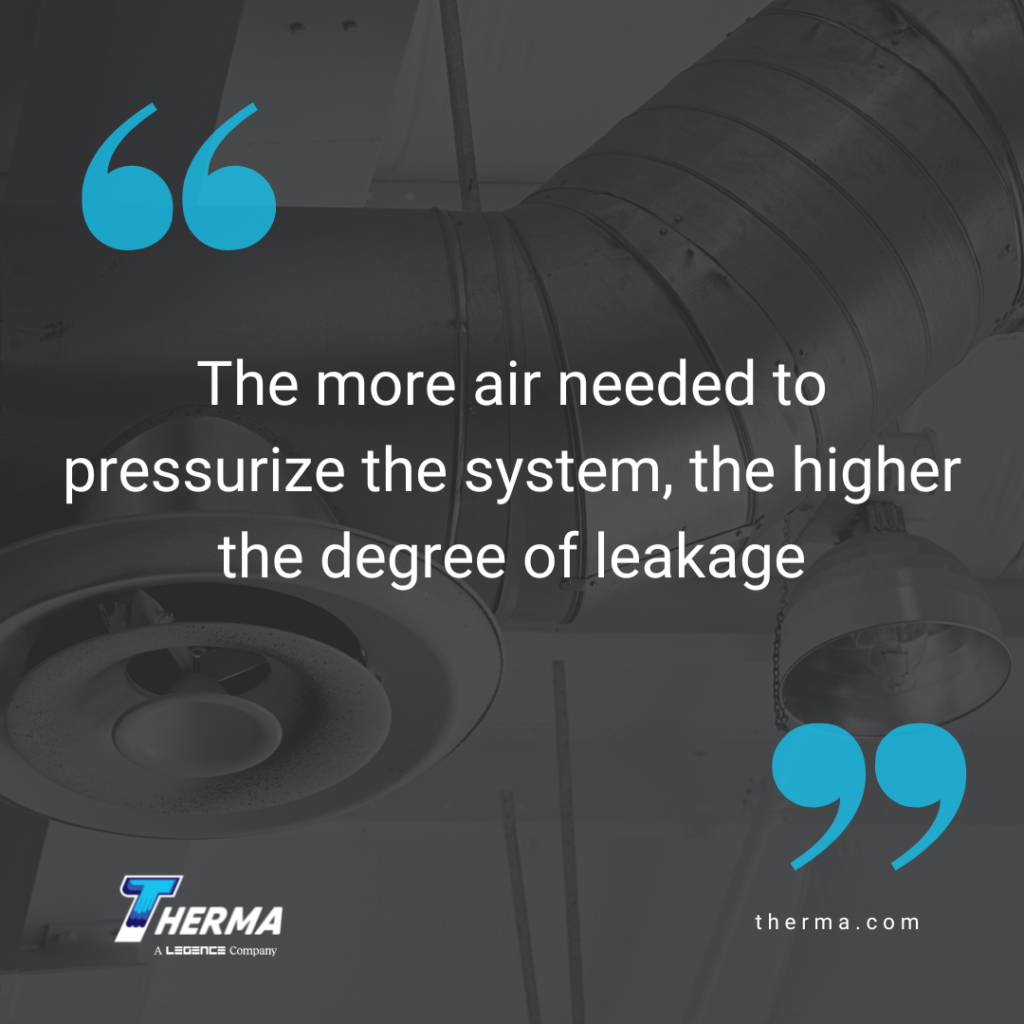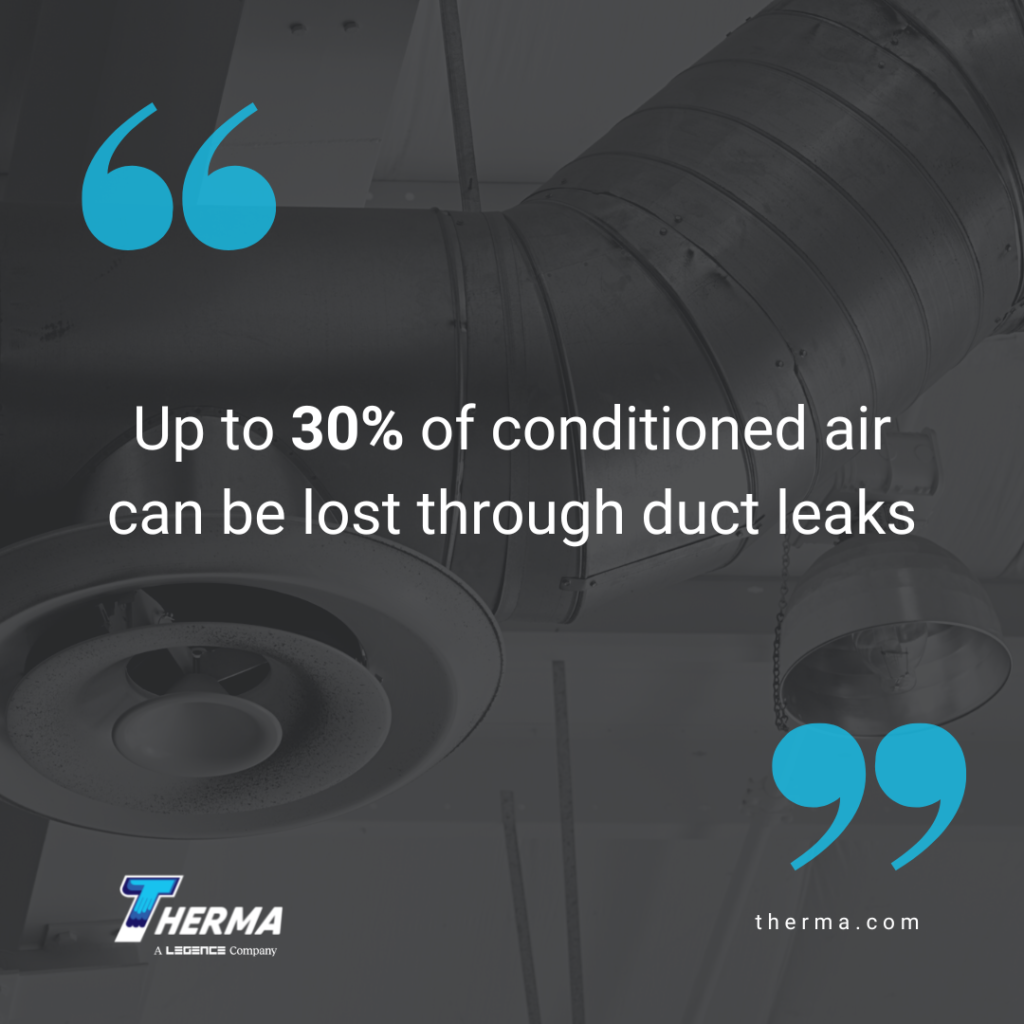by Patti Dees
Inefficient HVAC systems cost money and can make occupants miserable. One of the leading causes of inefficiency is leaky ductwork. HVAC ductwork testing is the first step when leaks are blowing a hole in your budget.
Why Leaks Matter
Up to 30% of conditioned air can be lost through duct leaks. Not only is this a waste of money from the energy used to heat or cool that lost air, but the HVAC system will work harder trying to meet the temperature setpoint. Added wear and tear shortens the lifecycle of the equipment, moving up the timeline for repairs and replacement.
Leaking ducts also impact indoor air quality. The building will have inconsistent temperatures. Occupants may experience unacceptable differences in airflow. Moisture and dust can be transferred between areas creating a haven for mold and allergens, and even cause damage to the building itself.
Types of Duct Testing
HVAC duct testing is used to find leaks in ductwork. There are two types of duct testing – duct pressure or leakage testing (DP), and leakage to outside pressurization testing (LTO).
Duct Pressure Testing
For the duct pressure test, a technician uses a duct tester. The tester includes a fan, a manometer, and supplies to seal all of the HVAC air vents to create a closed system. The testing equipment is connected to a return vent or air handler. If the testing equipment is inside the area normally conditioned by the system, a door or window will need to be opened. This ensures the area outside of the ductwork is at outdoor air pressure.
Air is forced into the ductwork to pressurize the system to 25 Pa above outdoor pressure. Airflow through the test equipment is measured in cubic feet per minute and is abbreviated CFM25 to indicate the system was pressurized.
In larger buildings that have more than one HVAC system or duct network, each system will need to be tested separately.
Leakage to Outside Pressurization Testing
LTO testing begins with the same setup used for DP testing, however, all windows and doors must be closed and one or more blower doors are added to pressurize the building to 25 Pa above outdoor pressure. With the entire building pressurized, air is forced into the ductwork to meet the indoor pressure if the testing equipment is connected inside or to 25 Pa above the outdoor pressure if the equipment is connected to an outdoor air handler.
Passing the Test
Interpreting the test results is relatively straightforward – the more air needed to pressurize the system, the higher the degree of leakage. Some leakage is considered normal. However, leakage rates over the acceptable amounts require follow-up for repairs.
The acceptable amount of leakage depends on the type of building, which standards or codes apply, and the stage of building construction. Energy Star, International Energy Conservation Code (IECC), and the International Residential Code (IRC) are examples of the codes that may be used. Leakage thresholds per 100 ft2 range between 4 CFM25 for systems in buildings still under construction, and 6 to 8 CFM25 for systems in completed buildings.
Unfortunately, neither type of testing provides information on the number, severity, causes, or locations of leaks. Similar results could be caused by many small leaks or a few significant leaks anywhere along the network. Causes range from holes in duct material, gaps between fitted pieces, missing or degraded fasteners, to fallen sections of ductwork.
To gather more information, technicians need to perform additional tests. Some technicians perform smoke tests in which smoke or vapor is forced through the system to pinpoint escaping air. An alternative is using a blower door to create negative pressure in the building and a pressure pan to see which vents show higher readings. Ducting connected to those vents is likely to be the problem.
When is Testing Needed?
For new construction, DP testing can be performed when the duct network has been roughed in but the building is not yet complete. This is referred to as Testing at Rough-in. Both DP and LTO testing can be performed after the building is completed but before it is released for occupancy, called Testing at Final.
Existing and retrofitted HVAC systems should be tested before a new heating or cooling unit is installed and as part of diagnostic tune-ups. HVAC duct testing can also be performed if an owner or manager suspects leaks or wants assurance before purchasing a property.
Repairing leaky ductwork is a good way to improve HVAC efficiency and save money. Regular duct testing, whether for new or existing systems, not only keeps the air clean, but at the right temperature, and that makes for happy, productive occupants. Speak with a Therma representative to find out how to keep your HVAC running smoothly.
Patti draws on her background as a chemical engineer to share information with readers on technology, manufacturing, and construction.
Sources
Washington State University Extension Energy Program – Duct Testing Standard (RS-33) – For New or Existing Construction
Energy.gov – Total Duct Leakage Tests | Building America Solution Center
Pacific Gas and Electric Company – Duct Testing: Why Is It Important?
Retrotec –Duct Testing Best Practices









